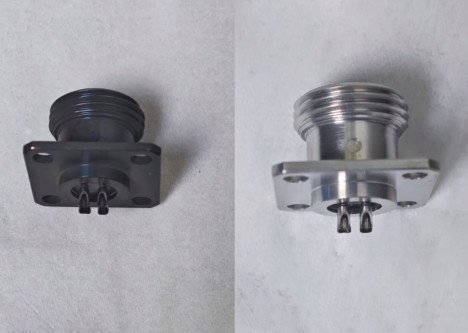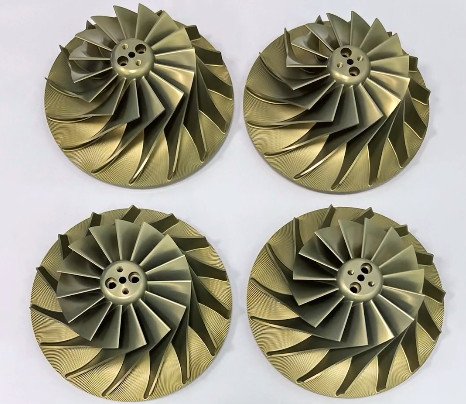Oxide skin, a thin layer of metal oxide formed on the surface of metals during oxidation, plays a critical role in materials science and industrial applications. This article provides a detailed examination of oxide skin, including its formation mechanisms, properties, influencing factors, and practical uses. The discussion emphasizes technical accuracy and systematic analysis to offer a comprehensive understanding of this phenomenon.
Formation of Oxide Skin
Oxide skin forms when a metal surface reacts with oxygen in the environment, typically at elevated temperatures or in the presence of moisture. This process, known as oxidation, results in the creation of a metal oxide layer that adheres to the substrate. The formation is governed by chemical reactions between the metal and oxygen, often influenced by environmental conditions such as temperature, humidity, and the presence of other reactive gases.
The oxidation process can be represented by a general chemical equation:
2M + O₂ → 2MO
Where M represents the metal, and MO is the metal oxide. The kinetics of oxide skin formation depend on the metal’s reactivity, the thickness of the oxide layer, and external conditions. For instance, metals like iron form iron oxides (Fe₂O₃ or Fe₃O₄), while aluminum forms a stable aluminum oxide (Al₂O₃) layer.
Oxidation occurs in stages:
- Initial Adsorption: Oxygen molecules adsorb onto the metal surface, forming a chemisorbed layer.
- Nucleation: Small oxide particles begin to form at active sites on the metal surface.
- Growth: The oxide layer thickens as more metal atoms react with oxygen, following either linear or parabolic growth kinetics.
- Stabilization: The oxide layer may reach a steady state where further growth is limited by diffusion barriers.
Properties of Oxide Skin
The properties of oxide skin vary depending on the metal substrate and environmental conditions. These properties determine the oxide layer’s functionality, whether as a protective barrier or a source of degradation. Key properties include:
- Adhesion: The oxide skin’s ability to bond to the metal surface affects its stability. For example, aluminum oxide adheres strongly, providing excellent corrosion resistance.
- Thickness: Oxide layers range from a few nanometers (e.g., passivation layers on stainless steel) to micrometers in high-temperature oxidation.
- Porosity: Porous oxide layers, such as those on iron, allow further oxidation, while dense layers, like those on chromium, inhibit it.
- Hardness: Some oxide skins, such as titanium dioxide (TiO₂), exhibit high hardness, enhancing wear resistance.
- Electrical Conductivity: Oxide layers can act as insulators (e.g., Al₂O₃) or semiconductors (e.g., Cu₂O), influencing their use in electronics.
The table below summarizes the properties of oxide skins for common metals:
| Metal | Oxide Formed | Thickness (nm) | Porosity | Adhesion | Primary Function |
|---|---|---|---|---|---|
| Aluminum | Al₂O₃ | 2-10 | Low | High | Corrosion resistance |
| Iron | Fe₂O₃/Fe₃O₄ | 100-1000 | High | Moderate | Rust formation |
| Titanium | TiO₂ | 5-50 | Low | High | Wear resistance |
| Copper | Cu₂O/CuO | 50-500 | Moderate | Moderate | Electrical applications |
Factors Influencing Oxide Skin Formation
Several parameters affect the rate and characteristics of oxide skin formation. Understanding these factors is essential for controlling oxidation in industrial processes.
- Temperature: Higher temperatures accelerate oxidation by increasing the reaction rate. For example, iron oxidizes slowly at room temperature but rapidly above 500°C.
- Oxygen Partial Pressure: The availability of oxygen influences the rate of oxide growth. Low oxygen environments may result in thinner layers.
- Surface Condition: Surface roughness, cleanliness, and pre-existing defects impact oxide nucleation and growth. Polished surfaces often form more uniform oxide layers.
- Alloying Elements: The presence of alloying elements, such as chromium in stainless steel, can promote the formation of dense, protective oxide layers.
- Environmental Factors: Humidity, pH, and the presence of corrosive agents (e.g., chlorides) can alter oxidation behavior, particularly in aqueous environments.
The following table quantifies the effect of temperature on oxide growth rate for selected metals:
| Metal | Temperature (°C) | Oxide Growth Rate (nm/h) |
|---|---|---|
| Aluminum | 300 | 0.1-0.5 |
| Aluminum | 500 | 1-2 |
| Iron | 300 | 10-50 |
| Iron | 500 | 100-500 |
Applications of Oxide Skin
Oxide skins are leveraged in various industries due to their unique properties. Their applications can be broadly categorized into protective, functional, and aesthetic roles.
- Corrosion Protection: Dense oxide layers, such as those on aluminum and stainless steel, act as barriers to prevent further oxidation or corrosion. For example, anodized aluminum surfaces are widely used in aerospace and construction.
- Thermal Barriers: Oxide skins on materials like nickel-based superalloys protect components in high-temperature environments, such as gas turbines.
- Electrical Insulation: Insulating oxide layers, such as silicon dioxide (SiO₂) in microelectronics, are critical for semiconductor devices.
- Catalysis: Certain oxide skins, like titanium dioxide, exhibit photocatalytic properties, used in environmental applications such as water purification.
- Aesthetic Finishes: Controlled oxidation can produce visually appealing patinas on metals like copper, used in architecture and art.
Control and Modification of Oxide Skin
Controlling oxide skin formation is critical in industries where oxidation impacts performance. Techniques to manage or modify oxide layers include:
- Alloying: Adding elements like chromium or silicon to metals enhances the formation of protective oxide layers.
- Surface Treatments: Processes like anodizing or passivation create controlled oxide layers to improve corrosion resistance.
- Coatings: Applying external coatings, such as paints or ceramic layers, can prevent oxygen access to the metal surface.
- Environmental Control: Reducing oxygen exposure or controlling temperature and humidity can limit unwanted oxidation.
For example, in stainless steel production, a chromium-rich oxide layer is deliberately formed to enhance corrosion resistance. This is achieved by exposing the steel to specific heat treatments in controlled atmospheres.
Limitations of Oxide Skin
While oxide skins can be beneficial, they also present limitations in certain contexts:
- Brittleness: Thick oxide layers, such as those on iron, can become brittle and crack, leading to spalling and exposure of the underlying metal.
- Non-Uniform Growth: Inconsistent oxide formation can lead to weak points, reducing the effectiveness of the protective layer.
- Thermal Expansion Mismatch: Differences in thermal expansion between the oxide and metal can cause cracking during temperature fluctuations.
- Interference with Bonding: Oxide layers can hinder welding or adhesive bonding by creating a barrier between surfaces.
These limitations necessitate careful consideration in material selection and process design to ensure the oxide skin serves its intended purpose without compromising performance.
Analytical Techniques for Studying Oxide Skin
Characterizing oxide skin is essential for understanding its properties and performance. Common analytical techniques include:
- X-Ray Diffraction (XRD): Identifies the crystalline structure of the oxide layer.
- Scanning Electron Microscopy (SEM): Examines surface morphology and thickness.
- X-Ray Photoelectron Spectroscopy (XPS): Analyzes the chemical composition of the oxide surface.
- Ellipsometry: Measures oxide layer thickness with high precision.
These techniques provide quantitative data on oxide skin characteristics, enabling engineers to optimize material performance for specific applications.

Conclusion
Oxide skin is a critical phenomenon in materials science, influencing the durability, functionality, and aesthetics of metal components. Its formation, properties, and applications are governed by complex interactions between the metal, environment, and processing conditions. By understanding the factors affecting oxide skin and employing appropriate control measures, industries can harness its benefits while mitigating its limitations. This systematic exploration provides a foundation for further study and application in engineering and technology.

